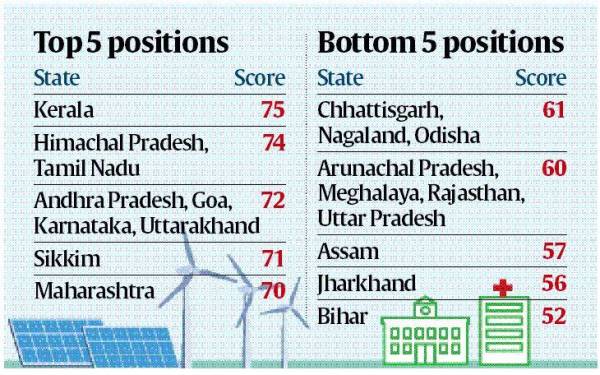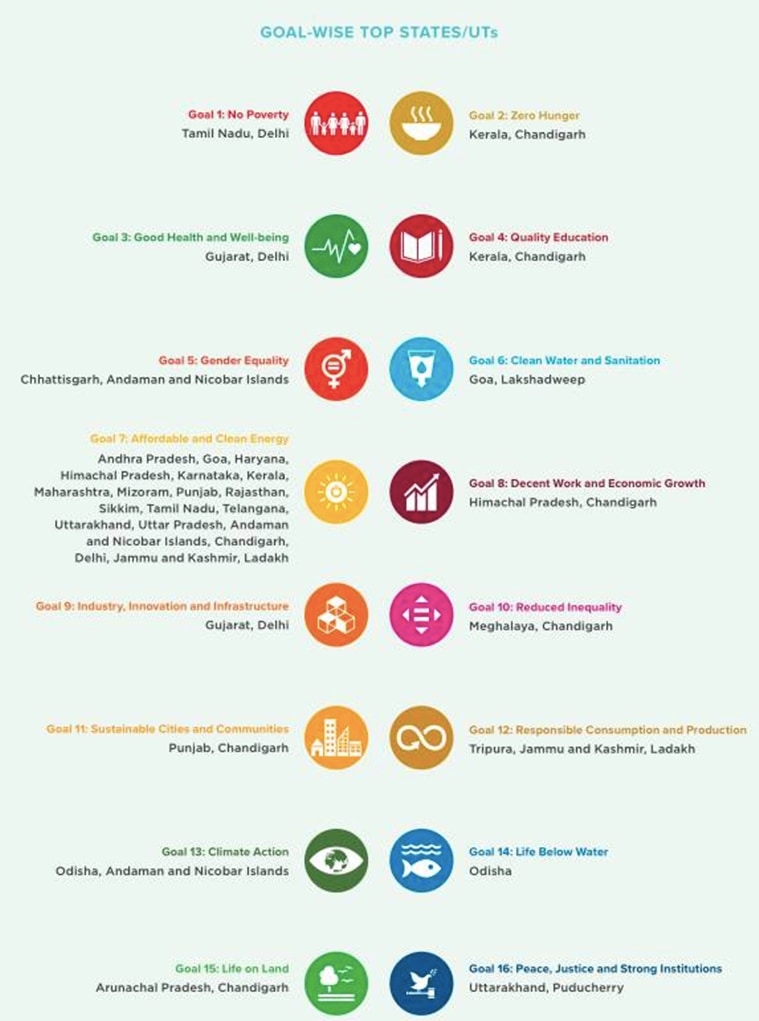Kerala has retained the top rank in NITI Aayog’s SDG India Index 2020-21, while Mizoram, Haryana, and Uttarakhand are the top gainers in terms of improvement in their rankings from 2019, according to a report released by the government think tank Thursday. Bihar, Jharkhand and Assam were the worst performing states in this year’s India index.
What is SDG India Index?
The Index for Sustainable Development Goals (SDGs) evaluates progress of states and Union Territories (UTs) on various parameters including health, education, gender, economic growth, institutions, climate change and environment. First launched in December 2018, the index has become the primary tool for monitoring progress on the SDGs in India. It has also fostered competition among the states and UTs by ranking them on the global goals.
The SDG India Index scores range between 0–100, higher the score of a State/UT, the greater the distance to target achieved. States and UTs are classified in four categories based on their SDG India Index score — aspirant: 0–49; performer: 50–64; front-runner: 65–99, achiever: 100. Currently, there are no states in the aspirant and achiever category; 15 states/UTs are in the performer category and 22 states/UTs in the front runner category.
What is the significance of the SDG India Index?
The index is developed in collaboration with the United Nations in India. It tracks the progress of all states and UTs on 115 indicators aligned with the National Indicator Framework (NIF) of the Ministry of Statistics and Programme Implementation. The index is a key tool for focused policy dialogue, formulation and implementation through development actions, in line with the global SDG framework. It helps in identifying crucial gaps related to tracking the SDGs and the need for India to develop its statistical systems.
“It remains a rare data-driven initiative to rank our States and Union Territories by computing a composite index on the SDGs. We are confident that it will remain a matter of aspiration and emulation and help propel monitoring efforts at the international level,” NITI Aayog Vice-Chairman Rajiv Kumar said.
From covering 13 Goals with 62 indicators in its first edition in 2018, the third edition of the index covers 16 Goals on 115 quantitative indicators.
 Source: NITI Aayog
Source: NITI Aayog
What are its latest findings?
The country’s overall SDG score improved by 6 points — from 60 in 2019 to 66 in 2020-21 — on accounts of improvement in performance in providing facilities including clean water and sanitation, affordable and clean energy among others.
While Kerala retained its rank as the top with a score of 75, Himachal Pradesh and Tamil Nadu both took the second spot with a score of 74. Bihar, Jharkhand and Assam were the worst performing states in this year’s India index.
Chandigarh maintained its top spot among the UTs with a score of 79, followed by Delhi (68).
 Source: NITI Aayog
Source: NITI Aayog
Mizoram, Haryana and Uttarakhand are the top gainers in 2020-21 in terms of improvement in score from 2019, with an increase of 12, 10 and 8 points, respectively.
While in 2019, 10 states/UTs belonged to the category of front-runners (score in the range 65-99, including both), 12 more states/UTs find themselves in this category in 2020-21. Uttarakhand, Gujarat, Maharashtra, Mizoram, Punjab, Haryana, Tripura, Delhi, Lakshadweep, Andaman and Nicobar Islands, Jammu and Kashmir and Ladakh graduated to the category of front-runners (scores between 65 and 99, including both).